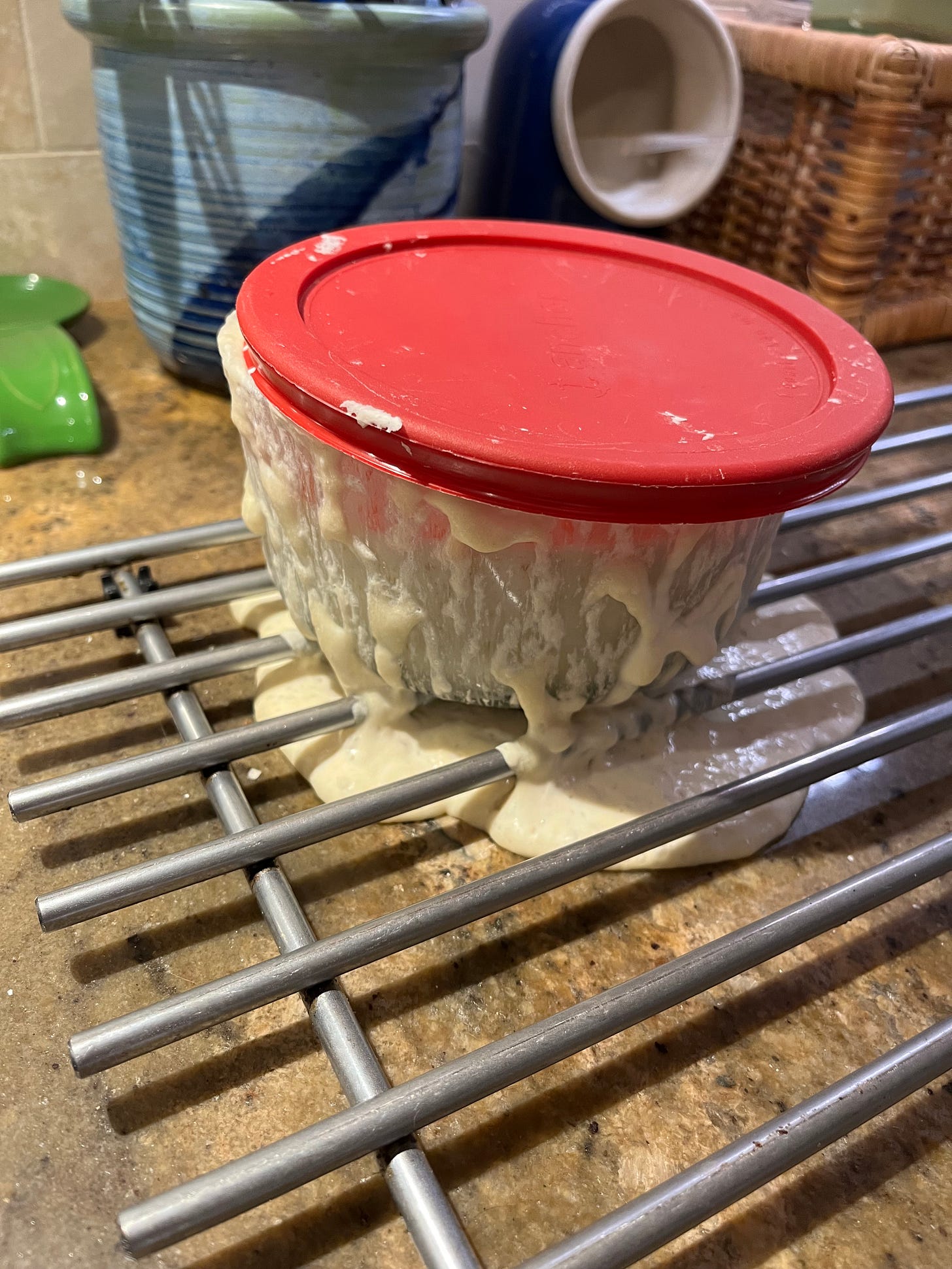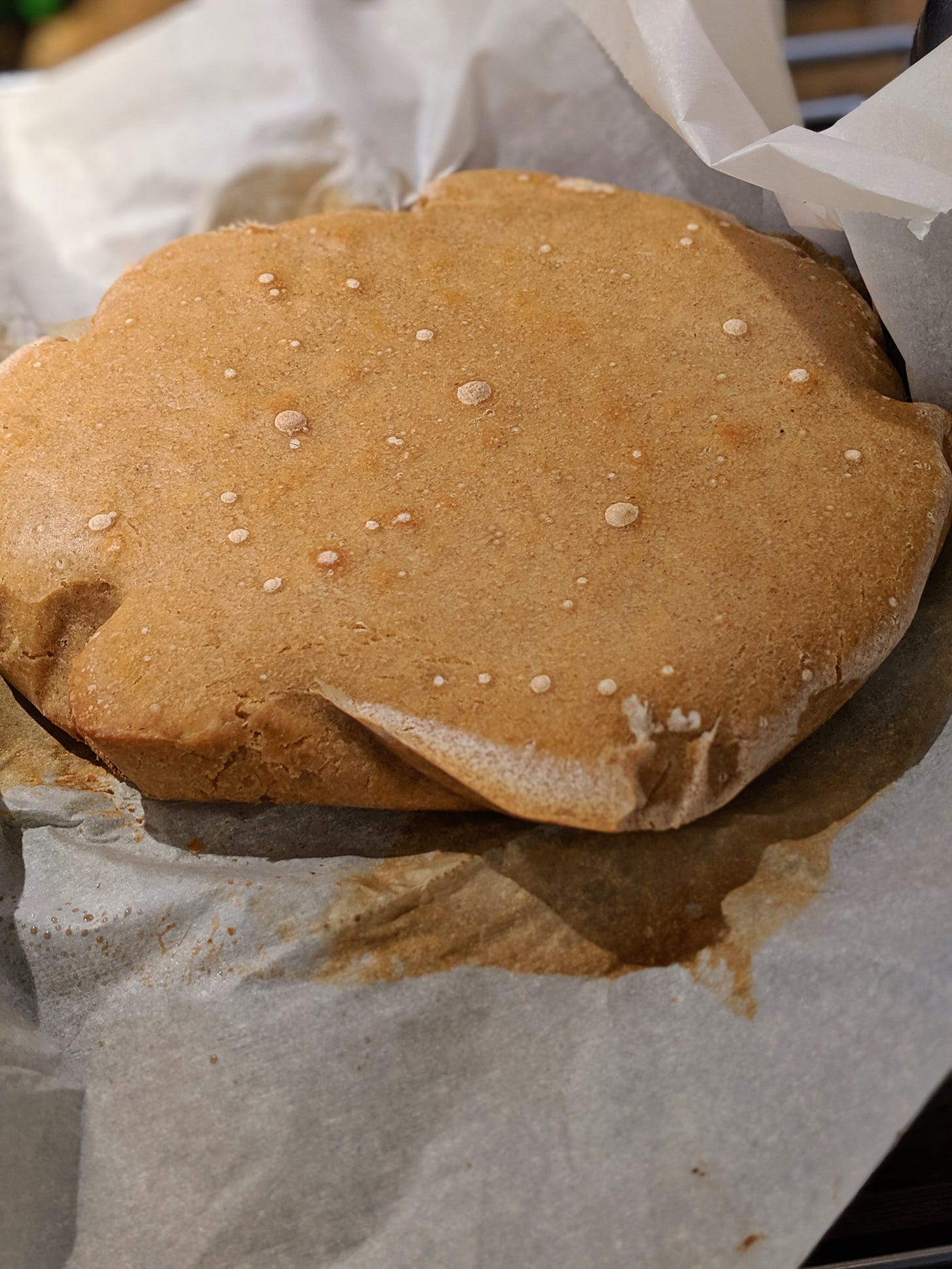📣 FLASH SALE! 📣 and Sylvester Sourdough & the Excitable Electrician
Rhythmic Recommendations vs. Rigid Requirements PLUS changes coming to I & I and Coaching this morning!
Reminder: September Coaching for all paid subscribers is TODAY, September 27, at 9 am EDT. Zoom link after the paywall.
📣 FLASH SALE! 📣
Changes are coming to Intellect & Intuition. Starting in October, group coaching and the archive will only be available to members at The Clearing level. Therefore, between Friday, September 27 to Monday, September 30, I’m running a flash sale for annual paid subscribers - 20% off for a year!
AND offering a bonus worth $250 to members of The Clearing!
Paid subscribers receive:
All posts, excluding the group coaching posts, and the ability to comment
6 workshops a year
A community of creative, intellectual & intuitive people
Journal prompts & recommendations
Please note that the workshops and posts will be available to paid subscribers for 2 months after publication, and then go into the archive.
If you subscribe to The Clearing (Founder’s Level) before October 1, you will receive:
All posts and the ability to comment
6 workshops a year
A community of creative, intellectual & intuitive people
Journal prompts & recommendations
Sound healings calibrated to meet you where you are
MONTHLY GROUP COACHING CALLS. Calls will be recorded and posted, so you can submit a question in advance and listen at your convenience if you’re unable to make it live.
BONUS! A 1:1 Introductory coaching and healing session with me (Value: $250)
I will not be offering 1:1 coaching as a bonus in I&I again. Starting October 1, the only way to have a coaching session with me is to book directly.
Need more information?
Find out more about the Introductory Session here.
You can find out more about the subscription levels here (although note that the sale is only describe in this post ):
I look forward to welcoming more of you into our community!
Sylvester Sourdough & the Excitable Electrician
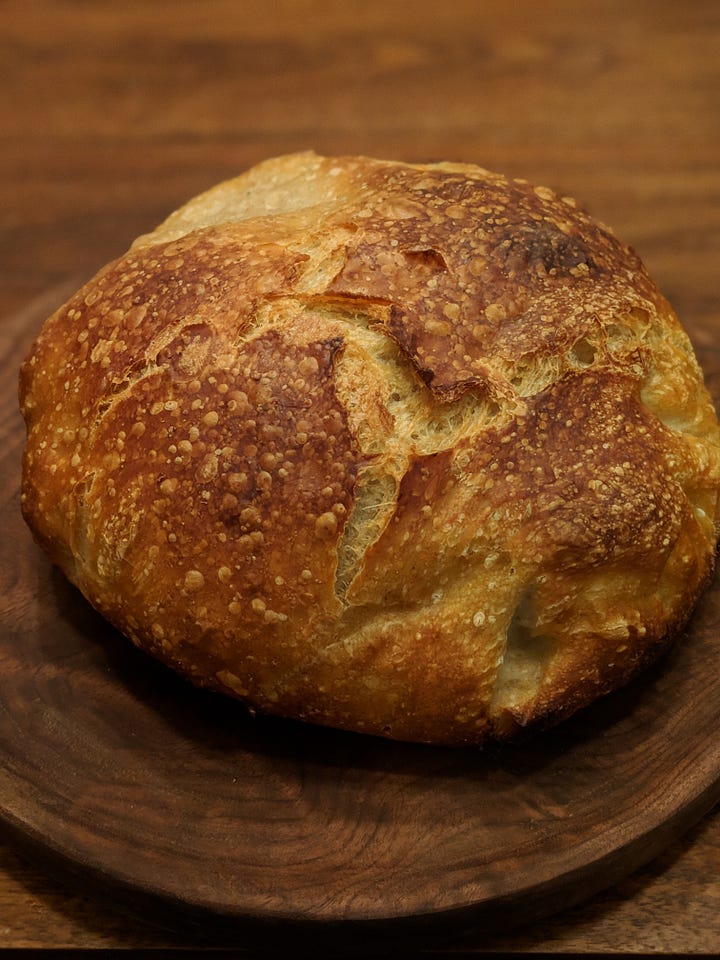

Last week, right after I returned from taking my kid to band practice, my doorbell range at 7:10am. I opened the door to my neighbour, a master electrician and all-around good guy. He asked, “Could I borrow a teaspoon of honey?”
“A teaspoon?” I asked
“Yeah, I’m making sourdough rye and I need a teaspoon of honey. I saw that you had just come home so I thought it would be ok to come by now.”
“Of course,” I said. I grabbed the honey and handed it to him. I avoided mentioning that he could have used maple syrup (we’re Canadians, of course we have maple syrup on hand) or brown sugar or really any sugar he had in the house.
“I’ll return it right away,” he said.
“No rush,” I replied.
He did return right away and then explained to me that after eating delicious sourdough rye at a family gathering, he was learning how to make sourdough.
I asked if he needed any starter, because, of course, I make sourdough bread weekly and would happily share my starter.
He said no, his new starter was just getting going.

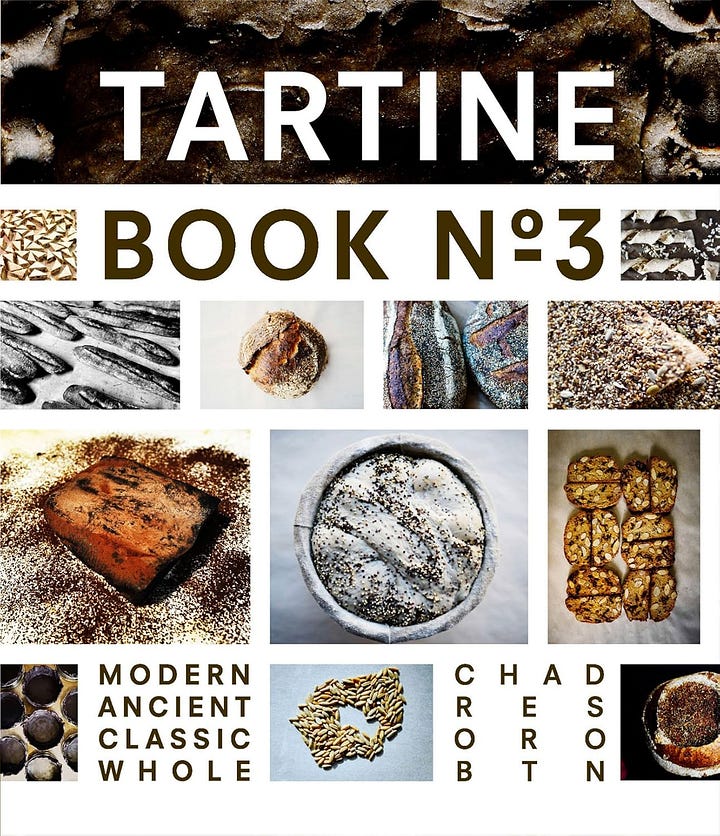
I told him I’d be happy to lend him my favorite book about sourdough, Tartine Bread,* and their cookbook about baking whole grain sourdough, Tartine Book No. 3.*
He said, “No worries, I’ve been watching videos on Youtube.”
“Okay,” I said, skeptically. I didn’t say that some of the sourdough “experts” on Youtube are wonderful, some are not, and all are promoting their own particular way of making sourdough. I didn’t say that whole grain sourdough is challenging, and really, you should master white flour sourdough first.
I was a master of restraint, especially considering how early it was. But I’d never want to discourage someone from trying sourdough bread.
He said, “So I was supposed to add the honey at 5:30, but now I’m running late.”
I said, “My experience is there’s more flexibility than you might think.”
He seemed doubtful.
And no doubt he was following instructions that were extremely specific. In hour 6, do this, in hour 9, do that.
But sourdough is more a rhythm of recommendations than a recipe. There are so many factors at play, including (but not limited to):
flour protein level
precise hydration of dough
humidity of room and/or proofing box
temperature of room
temperature of water
mineral content of water
wet or dry starter
the specific type and amount of wild yeast in your starter
You get the idea. It’s not easy to control for all these factors. Some recipes take them into consideration, some do not.
In my former academic field of ethnomusicology, when scholars threw around scientific words to explain the behavior of particular people or the emotional affect of a song, we called it “sciencing about music.”
There’s a lot of sciencing about sourdough, especially on YouTube.
And yeah, it’s baking, so there’s chemistry. But my experience making sourdough is that what it requires most is attention. Maybe a step needs more time, or less. A little more or less water or flour. You learn the way it’s supposed to feel, smell, sound, look, and taste, and adjust accordingly.
No drama required.
The same way people have been making sourdough for thousands of years.
Meeting Sylvester
Mama sent me to my grandmothers and great grandmothers to learn to cook. She wasn’t interested in having me in her territory, dirtying it up. But she did teach me to make sourdough when I was a child. That means I’ve been making sourdough bread for 40+ years.
I found the starter fascinating and cantankerous and demanding – it regularly overflowed in the fridge! I named it Sylvester because I was enamoured with alliteration.
My sourdough starter is also named Sylvester. And sometimes he overflows too
Here’s what I’ve learned in the past few years, during caregiving and afterwards: sourdough is never a disaster. It’s far more flexible than you think. And if things are going sideways, you can always add a pinch of yeast.
Yeah, I know, pillor me now.
It won’t ruin it – and it might just save it.
Making Sourdough Bread
Again, I’m going to recommend Tartine Bread,* which is the best book on sourdough I’ve found. There’s also an amazing recipe for croissants and pain au chocolat. Using a little starter makes it taste just like the perfect croissant and pain au chocolat that I had at Calixte on the Ile Saint-Louis. I promise. Just look:
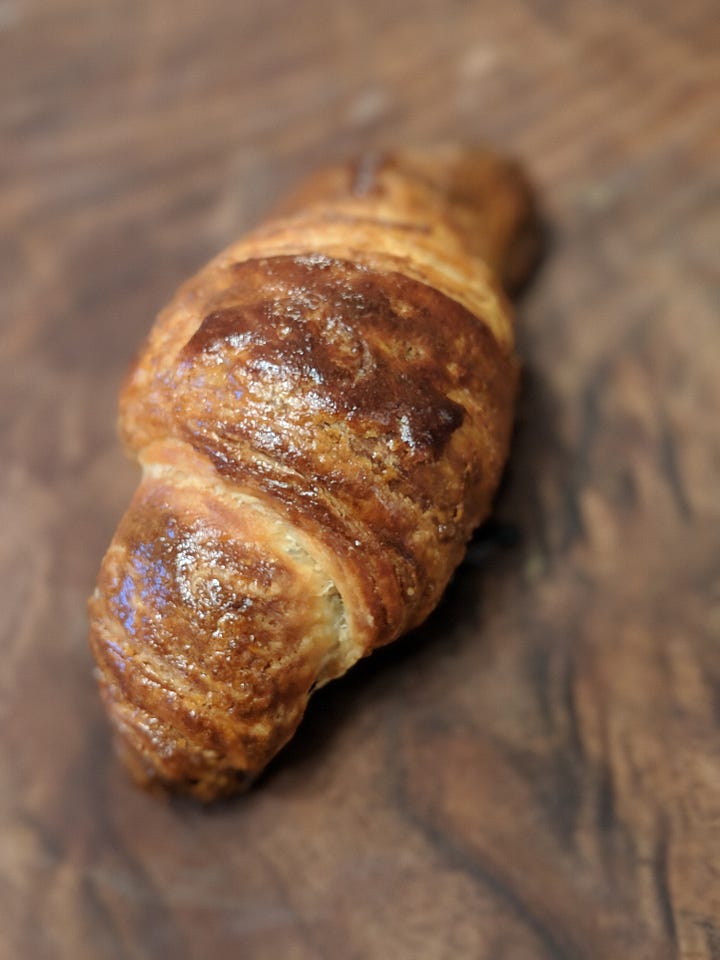
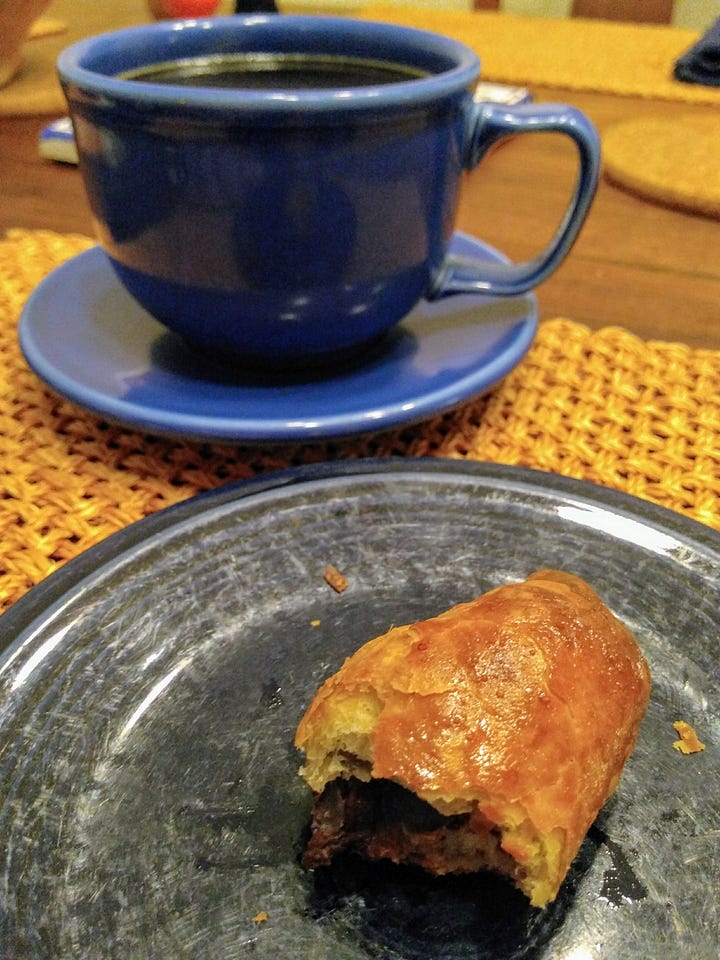
Still here? Haven’t bought the book yet? Or want to get started before it arrives? Ok. Here is my overview, with my very contrary but practical opinions.
Part 1: The Starter
Version 1: Mix equal weights flour and water, 30-50 grams each. Definitely use a scale. I like to start with rye because I think it captures the yeast best, but whole wheat and all purpose flour will work just fine. Don’t worry about it. Stir it well. Cover.
Wait for a few days, probably 2-3. Check for bubbles and sniff.
If no bubbles, wait another day.
If bubbles and it smells acidic, remove any crust. Take away 80% of the starter. Feed as before, equal weights flour (whatever type) and water.
Do this everyday until it rises and falls predictably. It’s ok if you miss a day.
You know what you can use instead that will already be ready?
Version 2: Borrow starter from a neighbor
Version 3, my Contrary Starter Alternative: Levain, which is “old dough.” Pinch off a bit of dough from any yeast bread you’re making and use that as the starter.
“But Celia!” I can hear you saying, “That’s not authentic sourdough!”
(Please don’t get an ethnomusicologist started on authenticity.)
No, it’s not. But it’s close enough. And it’s a trick that French bakers use, so I figure we’re ok. And unless you’re in the San Francisco Bay area, your wild yeast won’t be particularly distinctive. Use the levain even though it has a tiny bit of spent cultivated yeast. Call it done. Proceed to making the leaven.
Part 2: The Leaven
The night before you mix the dough:
1 Tb, maybe 30 grams, of mature starter
200 grams room temperature-to-warmish (warm if the room is colder, colder if the room is warmer) water
200 grams flour
Stir together and cover. Leave out overnight.
Here’s how you know if it’s ready: drop a spoonful in a jar or glass of room temperature water. If it floats, it’s ready. Otherwise you should wait.
Contrary Leaven Alternative: If you don’t have a starter, or (more likely) you’ve killed it or neglected it or travelled for awhile and don’t want to wait through feeding it several days for it to be nice and active, add a pinch of yeast.
Yes, I said yeast. Active dry yeast, less than an 1/8 of a teaspoon.
“But Celia!” I hear you say, “That’s not a leaven, that’s a biga!”
So it is. But if you have a family to feed and no time to wait, resurrecting your starter with the tiniest pinch of yeast is just fine.
Did you hear me? I said it’s JUST FINE.
Deep breath, y’all. It’s gonna be ok.
You have to decide what’s most important to you:
A well risen, beautiful loaf, in the limited time you have – when you can’t wait – that nobody will know isn’t sourdough
Or a Certified Authentic Sourdough Wild Yeast Loaf.
I used to choose this. Sometimes, when I was impatient but caught up in authenticity, the loaf would end up like this:
Not good. Make your decision. Time or authenticity.
Part 3: The Dough
For 2 loaves:
200 grams leaven
700 grams room temperature water
1000 grams (1 kg) white flour
Mix together. Rest for 45 minutes.
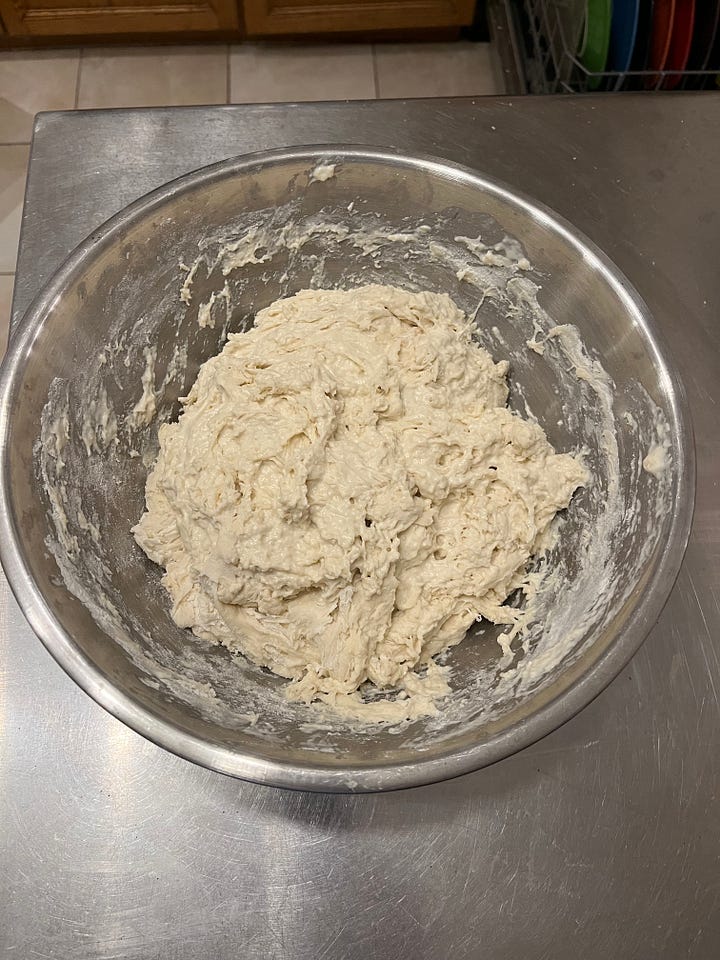
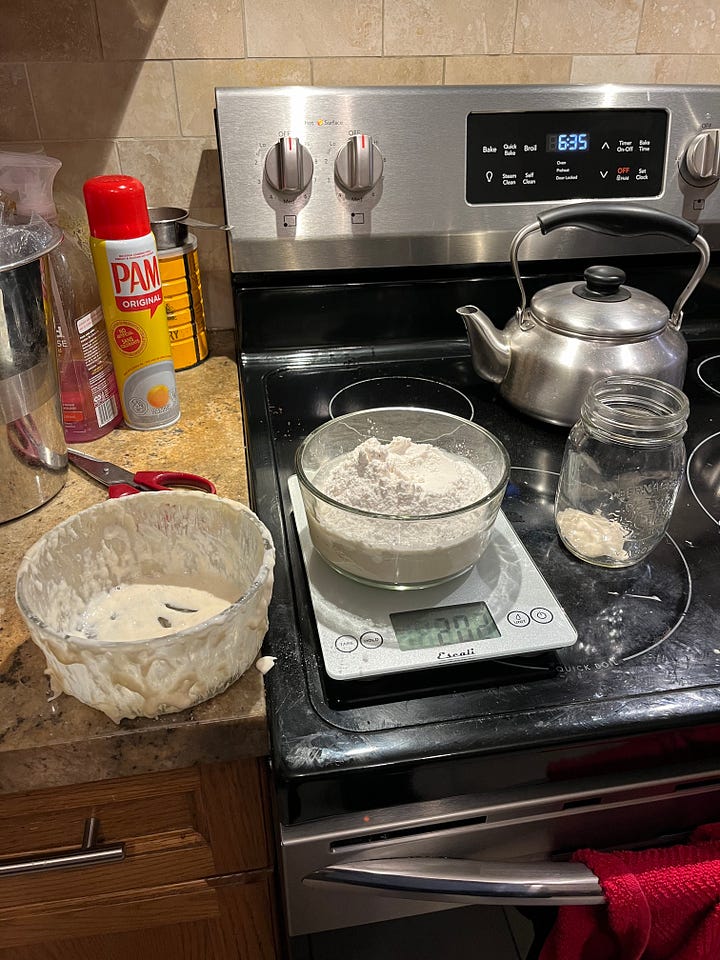
While it’s resting, in a little ramekin, dissolve:
20 grams of salt in
50 grams of hot water
Then refresh your starter before you forget. I tend to do
30 grams old leaven
200 grams water
200 grams flour
I let it rise for a few hours and then stick it in the fridge. Yes, I know. Bad Celia.
NOTE: starter and leaven store in the refrigerator will gain the lactic bacteria that we use to make yogurt. This makes them more sour. And that’s fine. But know that the increase in lactic bacteria decreases the amount and efficacy of the wild yeast. So watch it.
Once the 45 minutes are up, pour in the salt water and mix it in. Cover.
Wait 30 minutes, wet your hand and fold 4 times.
Repeat the folding process 3 more times, waiting 30 minutes between each time.
Wait 45 minutes, wet your hand and fold.
Wait 45 minutes, shape.
Here’s a video mixing in the salt and showing the folding, with the rising times cut.
So that’s about 4 minutes of active work, and let’s say 2 minutes for the first mixing. I would have been faster had I not been filming with my left hand instead of holding the bowl. In total 4-6 minutes of active work.
NOTE: Do NOT mix sourdough in your KitchenAid. It requires a gentle touch.
Put 1 loaf in a container with parchment paper and leave at room temperature. I like it to rise at least 4 hours after the final shaping, but it would probably be ok with less, especially if the kitchen is warm.
Assuming you’re not baking 2 loaves at once, put the other loaf in a large lidded container, lined with parchment paper, and store in the refrigerator. I generally try to use it within 4 days, but I’ve gone longer. It’s fine. And the ones that get at least an overnight rest in the fridge are much prettier, with a crust that blisters more.
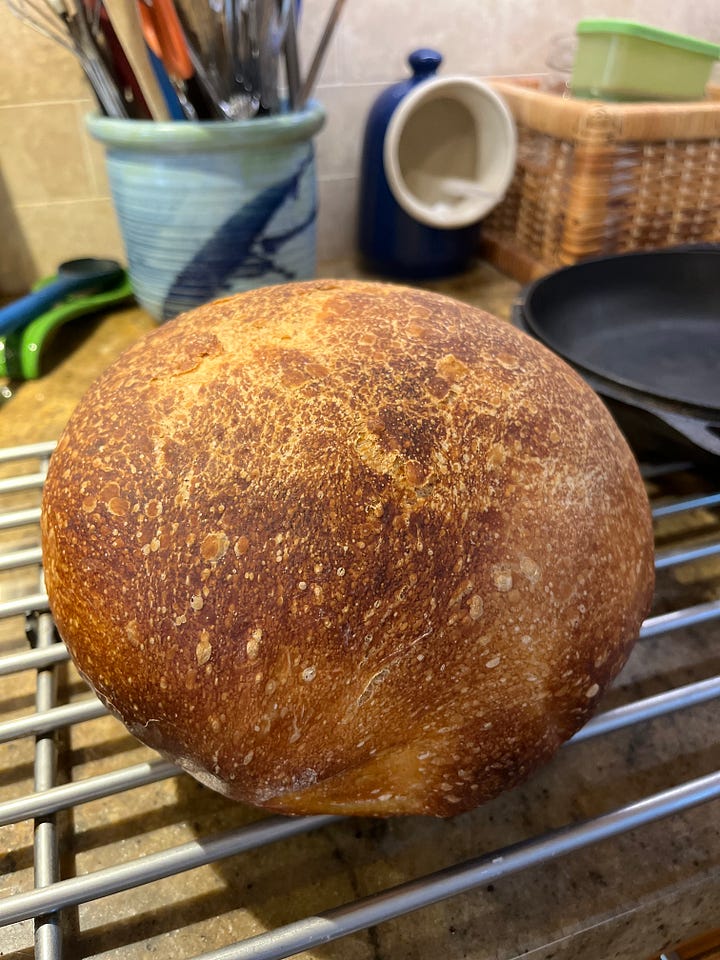
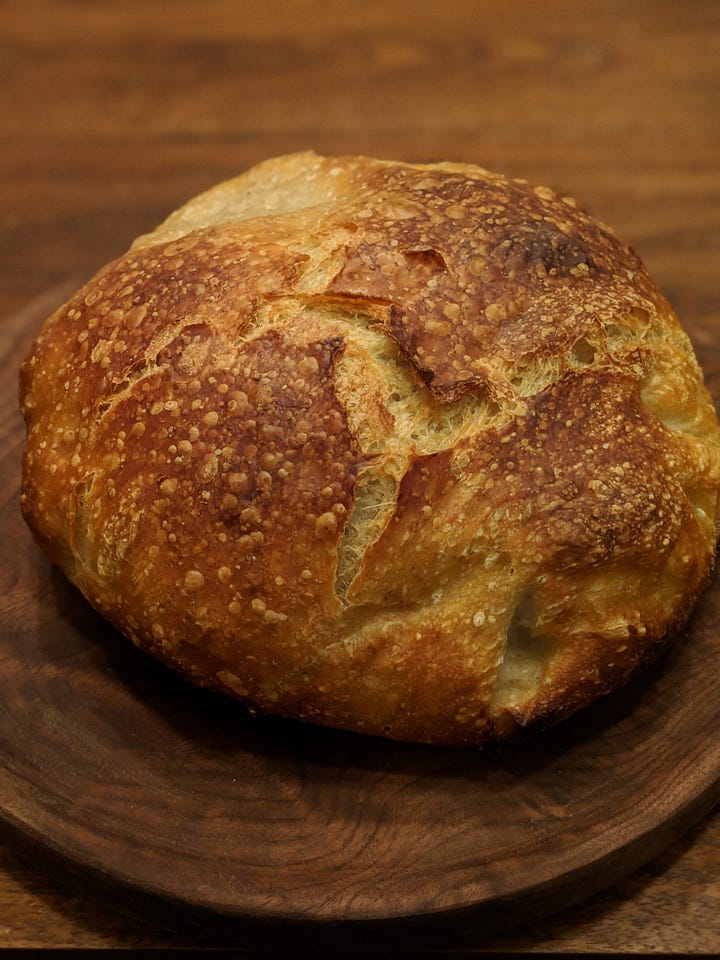
After 4 hours, put a dutch oven (with lid) in the oven and preheat to 450F/230C.
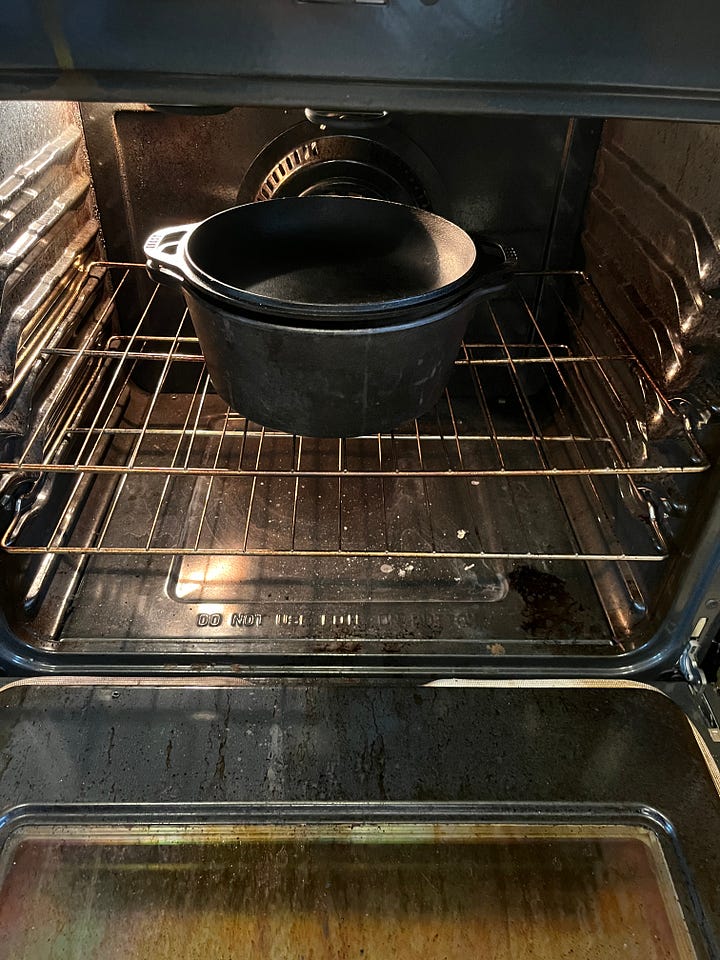
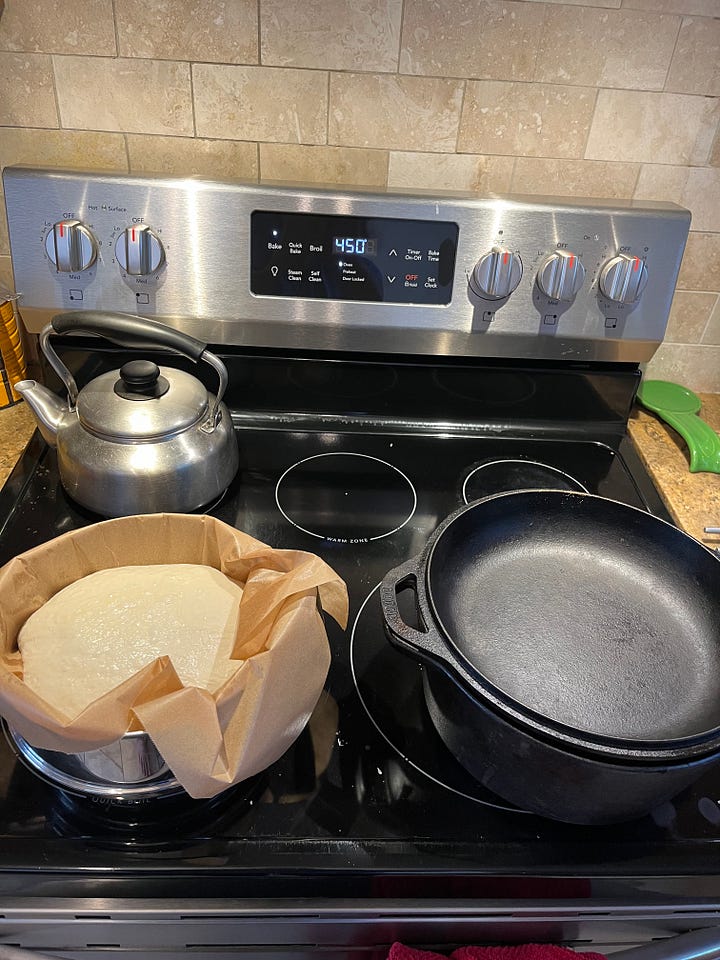
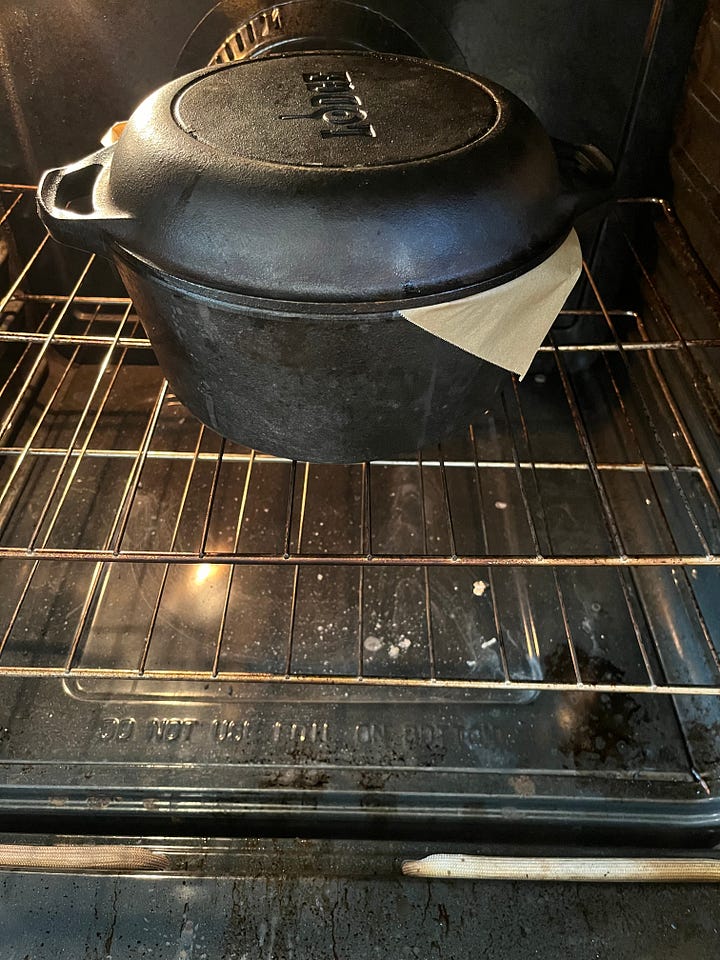
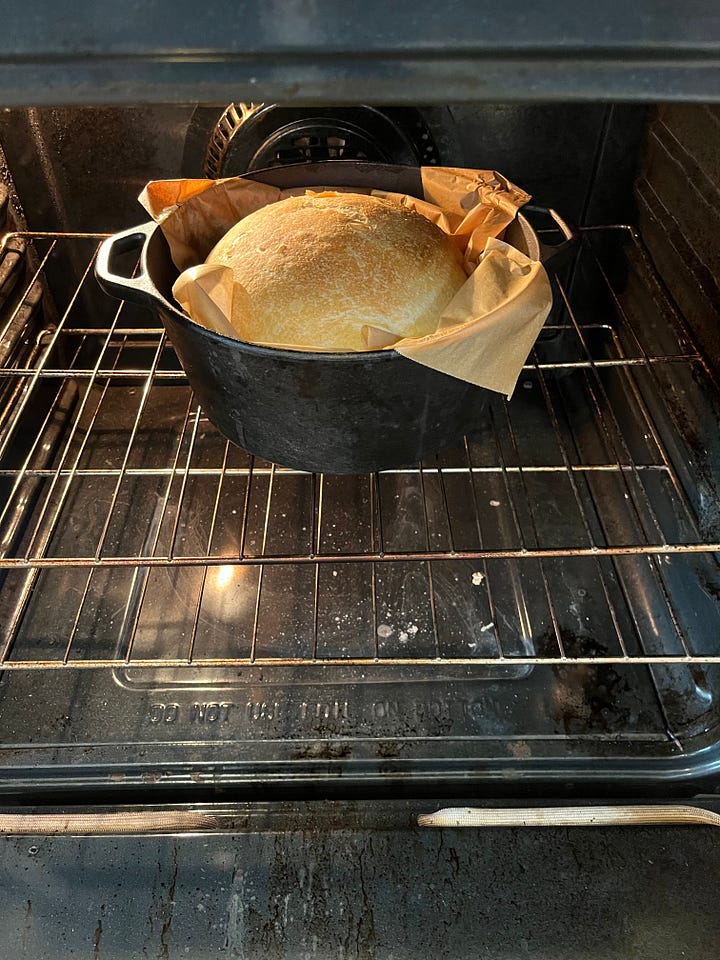
I love this cheap and cheerful 5 quart Dutch oven from Lodge.* See the lid? That’s a skillet too! But you can also use your fancy enameled Le Creuset.* It’s all good. The point is to have a steady cast iron oven-within-an-oven, which retains humidity during the initial part of baking and keeps the temperature stable, regardless of your oven.
When the oven is preheated, remove the dutch oven, remove the lid, and put the bread into the hot pan, transferring it using the parchment paper. Bake 38 minutes.
Yes, I know it’s a weird time. But it works for me.
Remove the lid. Lower the temperature to 400F/200C. Bake another 38 minutes.
Remove from oven. Lifting the parchment paper, transfer to a wire rack to cool. Remove the parchment paper. Cool right side up.
Let cool at least 30 minutes. First, it’s not entirely finished cooking and will be doughy if you cut into it before. Second, you’ll squish it and lose those beautiful sourdough holes.
HINT: Hold you hand on both crusts and jiggle the slices a bit and you’ll regain most of the shape. I’m often cutting at 25 minutes and have to do this.
NOTE: recipe can be delayed at most points by simply putting it in the fridge, covered.
I hope you enjoy this recipe. Sourdough is a great gift.
My flash sale was inspired by my local nursery, which put bulbs on 1/2 price on Wednesday. Here’s my bulb haul:
*Affiliate links. If you make a purchase, I may receive a small commission at no additional cost to you.
PS Here’s the zoom link for today’s coaching






